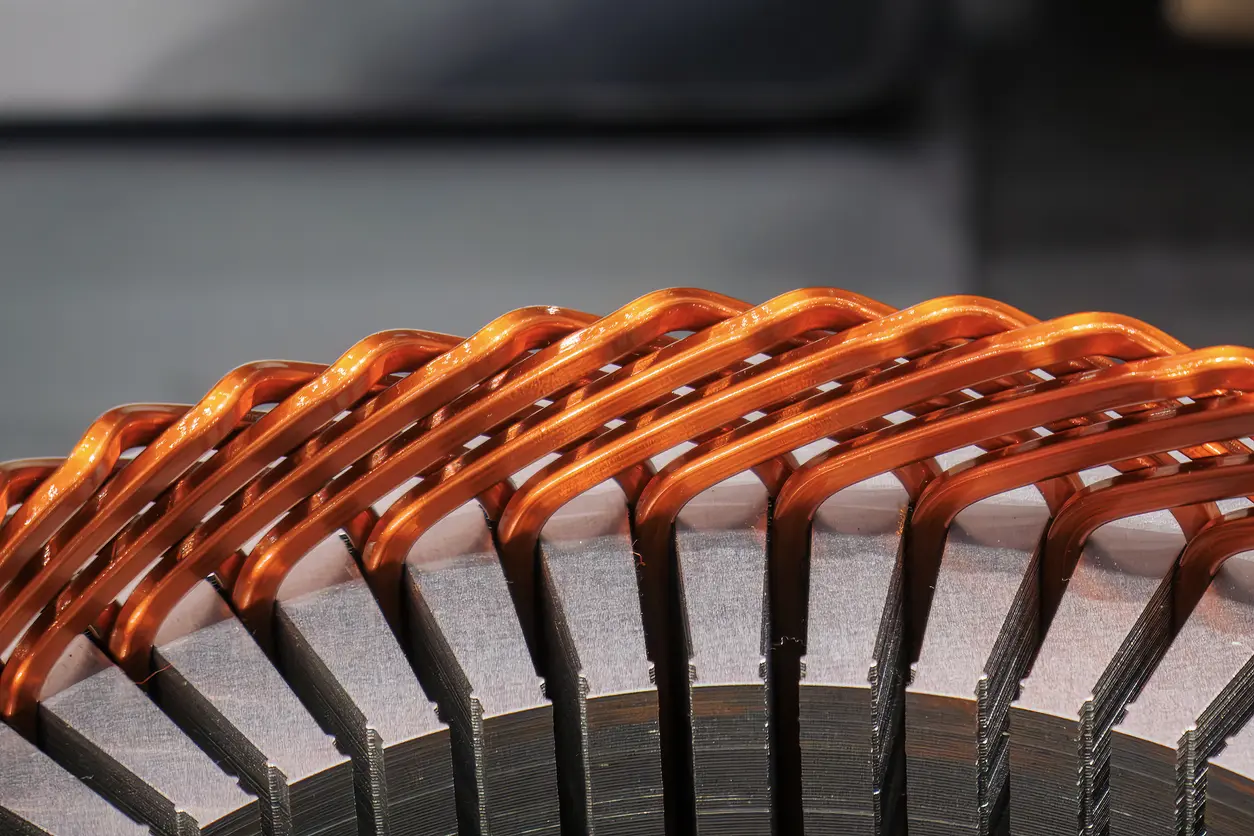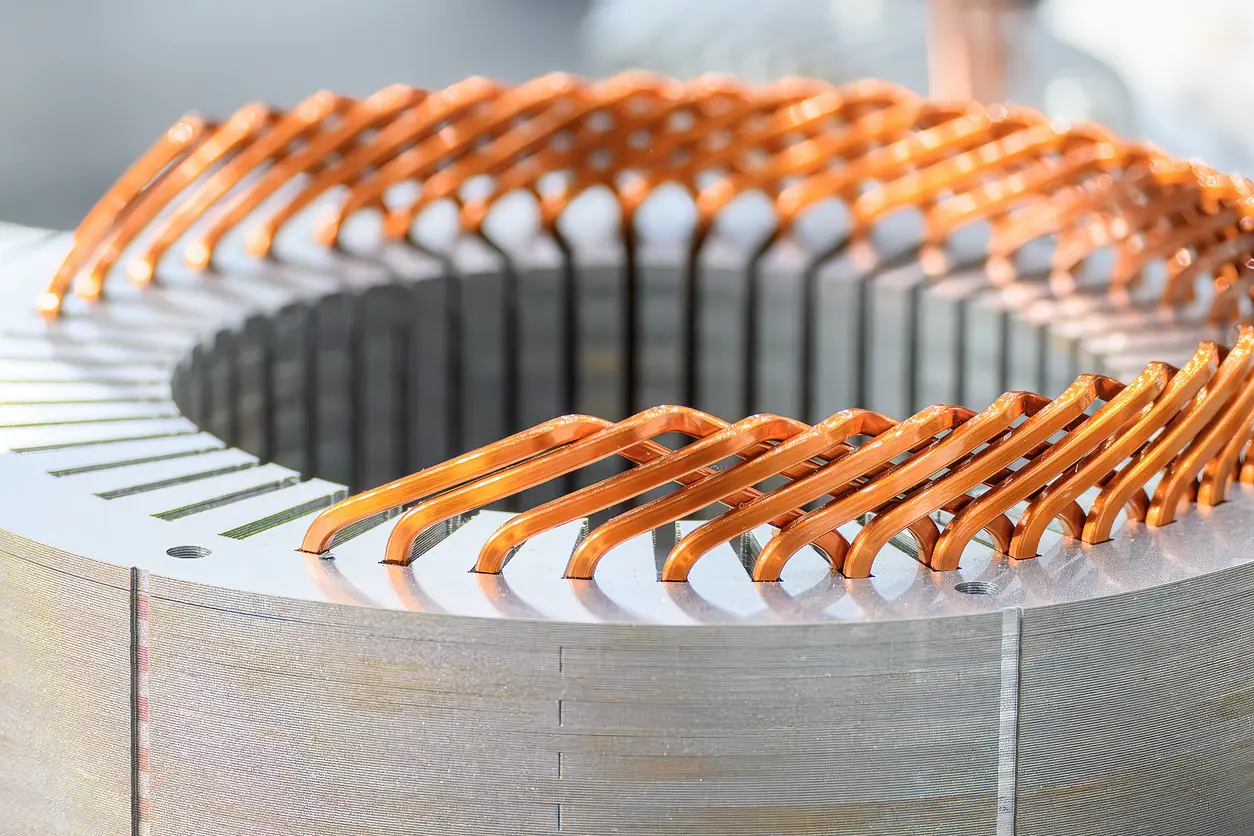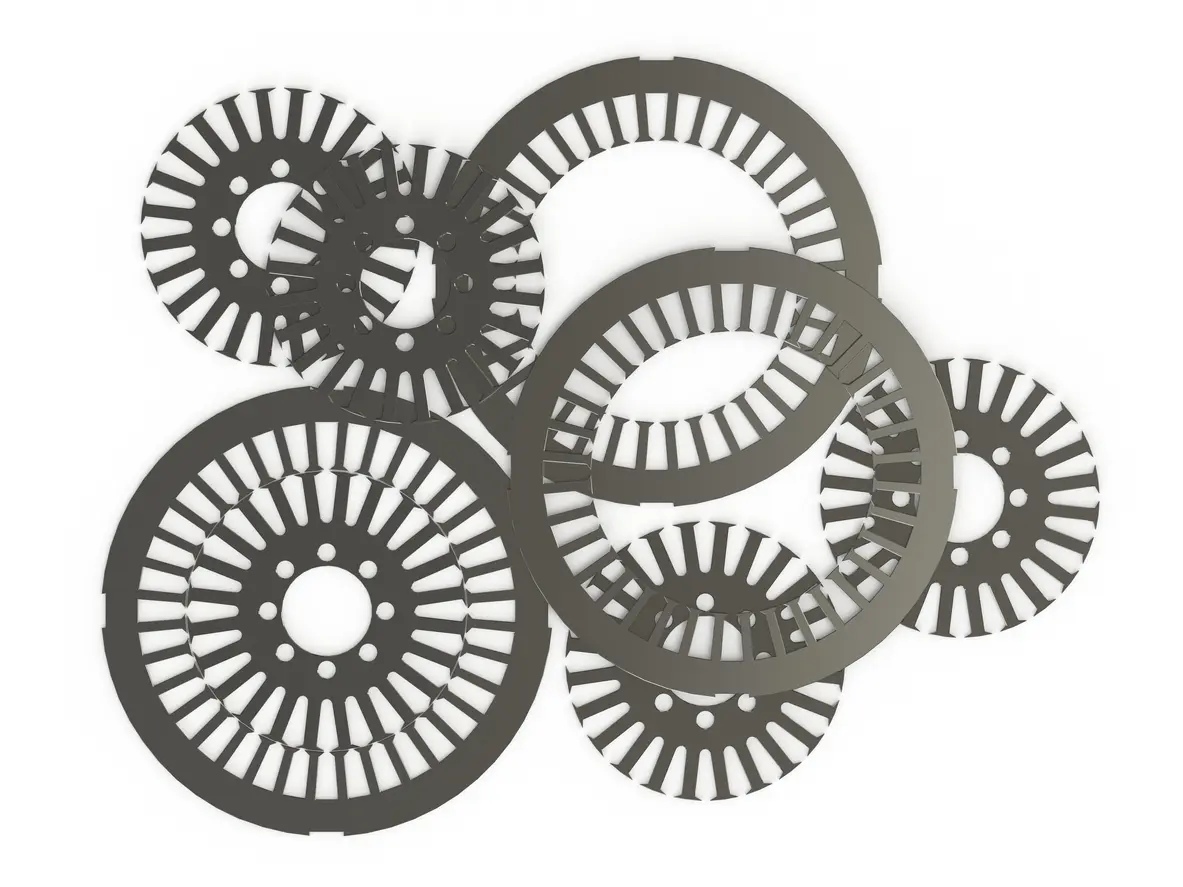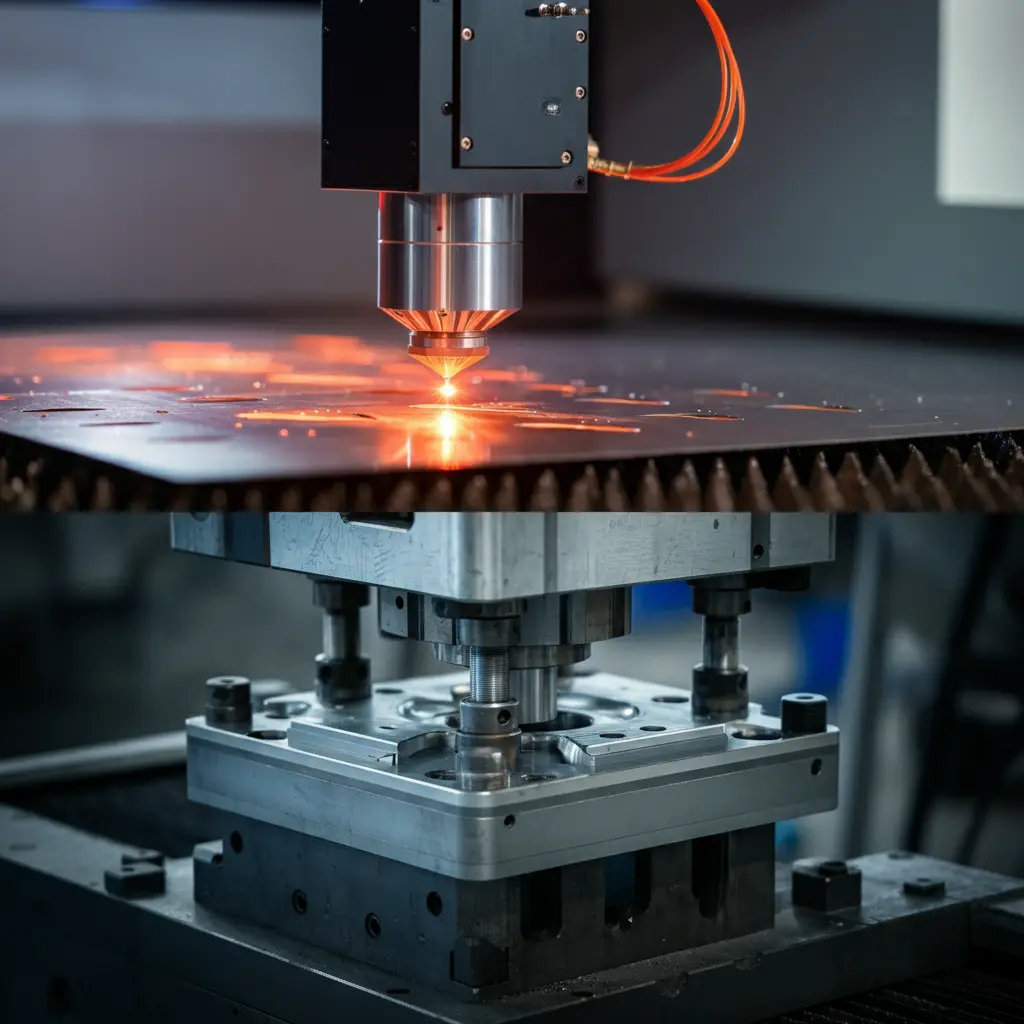1. Introduction to Electric Scooter Motor Cores
1.1 Why the Electric Scooter Motor Core Matters
The electric scooter motor core is a critical component that directly influences how efficiently an electric scooter converts electrical energy into mechanical motion. A well-designed motor core enables smooth acceleration, reliable torque delivery, and optimal energy usage—factors that significantly enhance the overall riding experience. This core serves as the foundation for power transfer, shaping the performance of the scooter by reducing energy loss and managing heat generation. In today’s competitive market, a scooter that can consistently deliver efficient power has a clear advantage, and that starts with the quality of its motor core.
1.2 Key Components of an Electric Scooter Motor Core
An electric scooter motor core typically consists of precision-stacked steel laminations, a stator, and a rotor. These laminations help guide the magnetic flux and minimize eddy current losses. The stator contains windings that, when energized, generate the magnetic field. Meanwhile, the rotor interacts with this field, thus creating the mechanical force that drives the scooter’s wheels. By carefully selecting lamination materials and ensuring proper assembly, manufacturers can reduce electromagnetic inefficiencies and heat accumulation. Even small improvements in lamination quality or alignment can lead to noticeable gains in performance and reliability.
1.3 Market Demand and Trends
Growing interest in urban mobility solutions has propelled electric scooters to the forefront as eco-friendly and cost-effective modes of transportation. Consequently, more manufacturers and riders are paying close attention to the electric scooter motor core and its role in sustaining performance over time. Innovations in materials—such as advanced coatings, specialized electrical steel, and refined stacking techniques—reflect the market’s need for lighter, more powerful, and longer-lasting motor cores. As electric scooter adoption continues to rise, understanding these evolving trends becomes imperative for anyone seeking durable and efficient two-wheeled transportation.
2. Tip #1: Select Optimal Lamination Materials
2.1 Importance of Electrical Steel Selection
Choosing the right lamination material is a pivotal step in enhancing the performance of any electric scooter motor core. High-grade electrical steel generally exhibit better magnetic properties, which can help reduce core losses. Although different grades of steel (such as silicon steel) may come with varying price points, the increased efficiency they can bring to the motor could lead to longer battery life and smoother acceleration. Even modest improvements in material composition might contribute to a noticeable difference in operational stability, especially under heavy load conditions.
2.2 The Role of Coating and Insulation
Proper coating and insulation of lamination sheets play a vital role in minimizing eddy currents. By applying uniform, high-quality coatings—such as epoxy or varnish—manufacturers can help keep heat generation within acceptable limits. This approach not only protects the core from premature wear but also aids in maintaining a stable temperature range during sustained operation. Since overheating can diminish motor output and compromise safety, it may be worthwhile for businesses and enthusiasts alike to explore advanced coatings that meet their specific performance requirements. Ultimately, selecting a reliable insulation method can prolong the lifespan of the electric scooter motor core.
2.3 Balancing Cost and Performance
While selecting premium steel or incorporating specialized coatings can enhance motor efficiency, cost considerations remain a reality for many manufacturers. It is generally prudent to evaluate both short-term and long-term benefits when deciding on lamination materials. An upfront investment in higher-grade steel or improved insulation might offer lower power consumption and reduced maintenance needs over time. On the other hand, it is also important to remain cautious, as not every application will necessitate top-of-the-line materials. By striking a balanced approach, you can optimize the electric scooter motor core to achieve an acceptable blend of performance, durability, and cost-effectiveness.

3. Tip #2: Perfect the Stacking and Assembly Process
3.1 Automated vs. Manual Stacking Techniques
Achieving a high-performance electric scooter motor core often depends on precise stacking techniques. Automated processes can provide consistency by minimizing human error, maintaining uniform lamination thickness, and ensuring accurate alignment. This level of precision may contribute to reduced losses and improved magnetic efficiency, which can be especially beneficial for those aiming to enhance battery life and torque. Manual stacking, on the other hand, offers flexibility for prototypes or smaller production runs. While it demands a skilled workforce and thorough inspection protocols, it may allow for more customization. Ultimately, selecting the right stacking method depends on production volume, budget, and desired performance outcomes.
3.2 Importance of Quality Control in the Assembly
Once the lamination sheets are stacked, rigorous quality control is crucial. Minor deviations in thickness or alignment can compromise the entire electric scooter motor core by increasing energy losses and heat generation. Therefore, adopting standardized tests—such as thickness measurement, visual inspection, and alignment checks—can help catch inconsistencies early. Ensuring every stack is uniform maintains optimal magnetic flux and prevents electrical shorts. Equally important is documenting these quality control steps to provide traceability and identify trends over time. A measured approach to quality assurance not only reduces defects but also helps maintain consistent performance across different production batches.
3.3 Maintaining Structural Integrity
Mechanical stress and vibration can gradually loosen lamination stacks if the assembly method is not robust. Techniques like riveting laminations, using adhesive bonding, or employing spot welding can safeguard against core distortion. Whichever method is chosen, it is advisable to pay attention to how torque, pressure, or heat is applied during assembly.
4. Tip #3: Enhance Cooling and Heat Dissipation
4.1 Ventilation Channels and Cooling Pathways
Effective cooling is vital for maintaining the long-term performance of any electric scooter motor core. Integrating ventilation channels into the core design helps regulate temperature by promoting airflow and preventing excessive heat buildup. These channels can be strategically placed around the stator and rotor, ensuring hot air is continually replaced with cooler air. Additionally, using well-placed openings or fins on the motor housing can further direct airflow, reducing the risk of localized hot spots. While these design elements can add complexity, the potential benefits—longer motor life, improved reliability, and better overall efficiency—often justify the extra effort.
4.2 Material Conductivity and Heat Treatments
Another factor in optimizing cooling involves selecting lamination materials with the right balance of magnetic performance and thermal conductivity. In some cases, specialized steels with higher silicon content or added coatings can help manage heat more effectively, thereby protecting the electric scooter motor core from potential damage. Heat treatments such as annealing may also enhance the material’s magnetic properties while lowering stress points that could lead to premature failures. However, it is worth noting that each heat treatment or material choice can affect costs, and not every application will necessarily demand such high-performance solutions.
4.3 Balancing Efficiency with Weight
While cooling improvements are important, it is also crucial to consider the impact on scooter weight. Adding extra cooling components or more robust materials might enhance thermal performance but could reduce the vehicle’s range if the additional weight places extra demand on the battery. A careful balance is required, particularly for those looking to optimize the efficiency of their electric scooter motor core while maintaining portability. Using lightweight alloys or targeted ventilation designs can help keep temperatures under control without overly compromising the scooter’s overall weight. Finding this equilibrium can significantly extend the motor’s service life and maintain dependable performance over the long run.
5. Tip #4: Optimize the Motor Core Geometry
5.1 Streamlined Shapes for Better Magnetic Flux
One effective way to boost the performance of an electric scooter motor core is to optimize its overall geometry. Streamlined shapes in the lamination stack can improve how magnetic flux flows through the core, thereby reducing energy losses. For instance, using trapezoidal or segmented laminations may help direct the magnetic field more efficiently toward the rotor. These geometry refinements can contribute to better torque output and potentially lower heat generation. However, each design choice typically involves trade-offs. More complex lamination shapes may require specialized tooling or added manufacturing steps, which could affect production costs. As a result, it is often advisable to analyze projected benefits and potential drawbacks before committing to a final geometry.

5.2 Calculating Slot Dimensions and Air Gaps
Even minor alterations in slot dimensions and air gap spacing can influence the operational characteristics of an electric scooter motor core. When stator slots are too large, undesirable leakage of the magnetic field can occur, reducing efficiency. On the other hand, overly narrow slots may limit winding space, potentially restricting the current that flows through the coils. Balancing these factors is crucial for achieving a reliable compromise between performance and manufacturability. Additionally, carefully monitoring the air gap between the stator and rotor can ensure consistent torque generation. Some manufacturers conduct computer-aided simulations (CAE) to predict how different air gap sizes affect performance, allowing them to refine designs based on data rather than trial and error.
5.3 Balancing Noise and Vibrations
Poor geometry choices may lead to unwanted noise and vibrations when the motor operates under load. While some degree of vibration is unavoidable, excessive levels can compromise ride comfort and accelerate wear on components. Designing the electric scooter motor core with balanced lamination shapes and carefully spaced slots can help mitigate these concerns. Moreover, certain structural enhancements—like adding dampening features or incorporating lightweight but sturdy materials—can further minimize oscillations. Although these modifications might slightly increase manufacturing complexity, they can contribute to a quieter, smoother ride and a longer-lasting motor core, making them worth considering for many applications.
6. Tip #5: Collaborate with an Experienced Manufacturer
6.1 The Value of Expertise in Lamination and Stacking
Working alongside an experienced manufacturer can be critical when aiming to produce a high-performance electric scooter motor core. Industry veterans often possess a deep understanding of advanced manufacturing methods, including precision lamination stacking, specialized welding, and quality control processes. By choosing to collaborate with a company that has a proven track record, you can potentially avoid common pitfalls like lamination misalignment, insufficient insulation, or suboptimal material usage. Even subtle variations in the stacking process can influence magnetic efficiency and durability, making expert input a worthwhile investment.
Further Reading:





